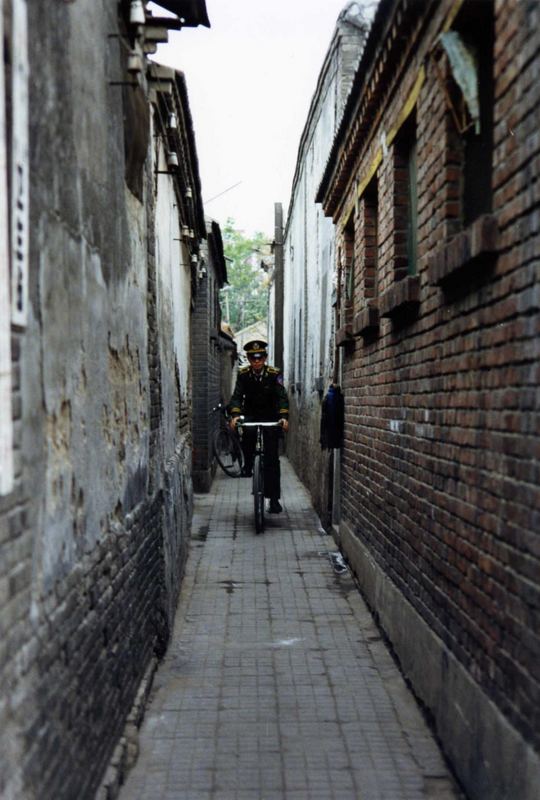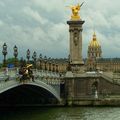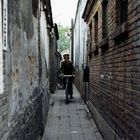Nine million bicycles...
During the spring of 1992 we traveled to China.
We stayed for a time in Beijing and found out that the city was build up of hutongs and sheyuans.
Hutongs are narrow streets or alleys, most commonly associated with Beijing in China. The word hutong comes from the Mongolian hottog meaning “water well". During the growth of towns and cities, wells dug by villagers formed the centres of new communities.
In Beijing, hutongs are alleys formed by lines of sheyuan, traditional courtyard residences. Many neighbourhoods were formed by joining one siheyuan to another to form a hutong, and then joining one hutong to another. The word hutong is also used to refer to such neighbourhoods.
In old China, streets and lanes were defined by width. Hutongs were lanes no wider than 9 metres. Many are smaller; Beijing hutongs range in width from 10 metres down to only 40 centimetres. Mostly the direction of the streets is east-west. So the doors of the houses are opened to the north or the south. This kind of construction proceed from the philosophy of Feng Shuien, who build the Forbidden City. It was not alowed to build higher buildings then the emperial palace in the Forbidden City.
Since the mid-20th century, the number of Beijing hutongs has dropped dramatically as they are demolished to make way for new roads and buildings. More recently, some hutongs have been designated as protected areas in an attempt to preserve this aspect of Chinese cultural history.
This police officer was in a rather hurry. I saw him at the end of this small alley. He was cycling very hard and started to ring his bell. You have to know that Chinese bicycle bells produce a lot of noise. I just could make 2 pictures.
In the few seconds we could see each other faces, he smilled to me, like Chinese always do...










Oliver O. 21/02/2007 20:14
+Sandra U. Ralf J. 10/12/2006 21:07
Fine perspektive and top storie.Greetings from
Sandra and Ralf
Levent Yy 08/12/2006 9:38
the best perscpevtive ! ... very successful... you have to convert B/W... congr.Maria João Arcanjo 28/11/2006 16:43
Excellent story and very good capture. BeijinhosMJ
Pascal Viyer 24/11/2006 19:14
Wow, Cor, nice story. This shot is very well taken.Pv
Inez Correia Marques 23/11/2006 13:15
Katie Melua has a song about the bicycles in Beijing.nice.
Theo Weijmer 21/11/2006 17:06
Great shot and story.Greetings Theo
Yanina Tymchuk 21/11/2006 8:24
interesting composition ;-)Christiane Wüllner 19/11/2006 21:45
Good seen. Fine pic with right surroundigs. Regards ChristianeAlexandra Baltog 19/11/2006 21:31
read the story...good shot!
A.
DRAGA PUC 19/11/2006 19:03
nice picture, great storyliefs
draga